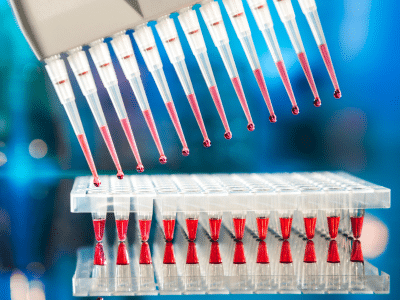How to handle dry ice provided with the biological samples?
Some biological samples or reagent transport may require dry ice use.
What is dry ice made of?
This material is made by experts of cold from 2 elements … Dry ice is actually not a specific / new water state that you would have missed during primary school classes !
Indeed, dry snow or carbon dioxide snow is a solidified form of carbon dioxide – CO2 – obtained by increasing the pressure of a chamber containing CO2 in liquid form. This process allows to obtain either pellets thanks to a pelletizer, or sticks thanks to an extruder.
Dry ice, also called carbonic ice, is generated by liquid nitrogen transformation.
It is highly recommended to chose specialized manufacturers to get your dry ice.
Some “homemade” solutions are available on websites, but these are not safe.
What are dry ice benefits?
Dry ice is an environment friendly material; its manufacturing process requires few materials and transformations.
Both types of dry ice (nitrogen-based and carbon-based) are used in the medical sector.
In chemistry, dry ice is in high demand because it carries no water in its composition, that could affect the analysis accuracy. This solution will therefore allow rapid cooling over a long period of time without any impact on the results.
For the biological sample transport such as tissues, organs, … dry ice will allow to keep these elements at -80°C temperature during long hours. This is possible only if it is associated with high-performance insulated containers. These ones have to be compatible with the use of dry ice.
And for those who would like a youthful cure or for the athletic people, cryogenic therapy also uses dry ice …. It can give ideas to lab mates but be aware of the care to be taken 😊.
What about precautions for use and waste disposal of dry ice ?
| Carbon snow (CO2 based) | Dry ice (liquid nitrogen based) |
|---|---|
| Burn risk: dry ice temperature is about -80°C. The contact with the skin leads to the formation of crystals in our cells which are thus destroyed, burned by the heat. | Risk of burns: it is imperative to wear protective cryogenic gloves and protective glasses in case of projection |
| Asphyxiation danger: the dry ice handling must be done in a ventilated area. As it is CO2, there is a risk of intoxication linked to the carbon dioxide inhalation (headaches, high blood pressure…) | Same recommendation as for dry ice because the risk of asphyxiation is the same |
| Explosion risk: when dry ice is heated, it releases a gas. This one will take up more space than its solid version. If it is enclosed in a hermetically sealed container, there is therefore a risk of explosion | Same risk of explosion which requires the use of a specific container |
Whether the material is carbon or nitrogen based, it is necessary to let it return to its gaseous form in the open air in a ventilated room before destruction.




